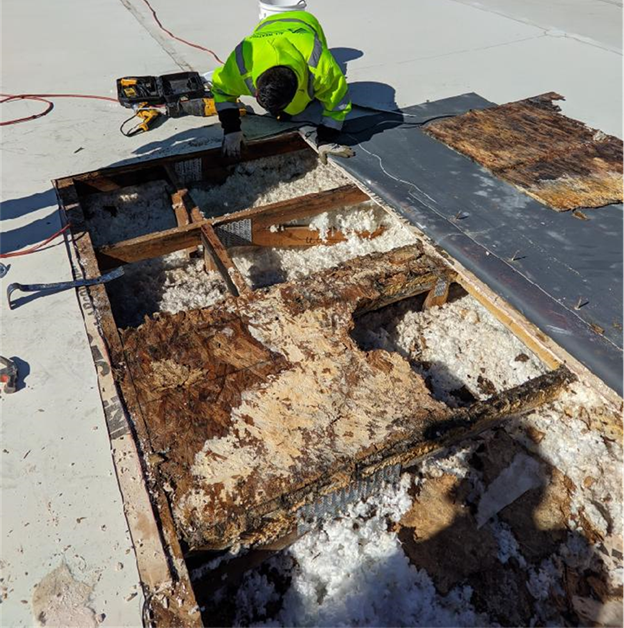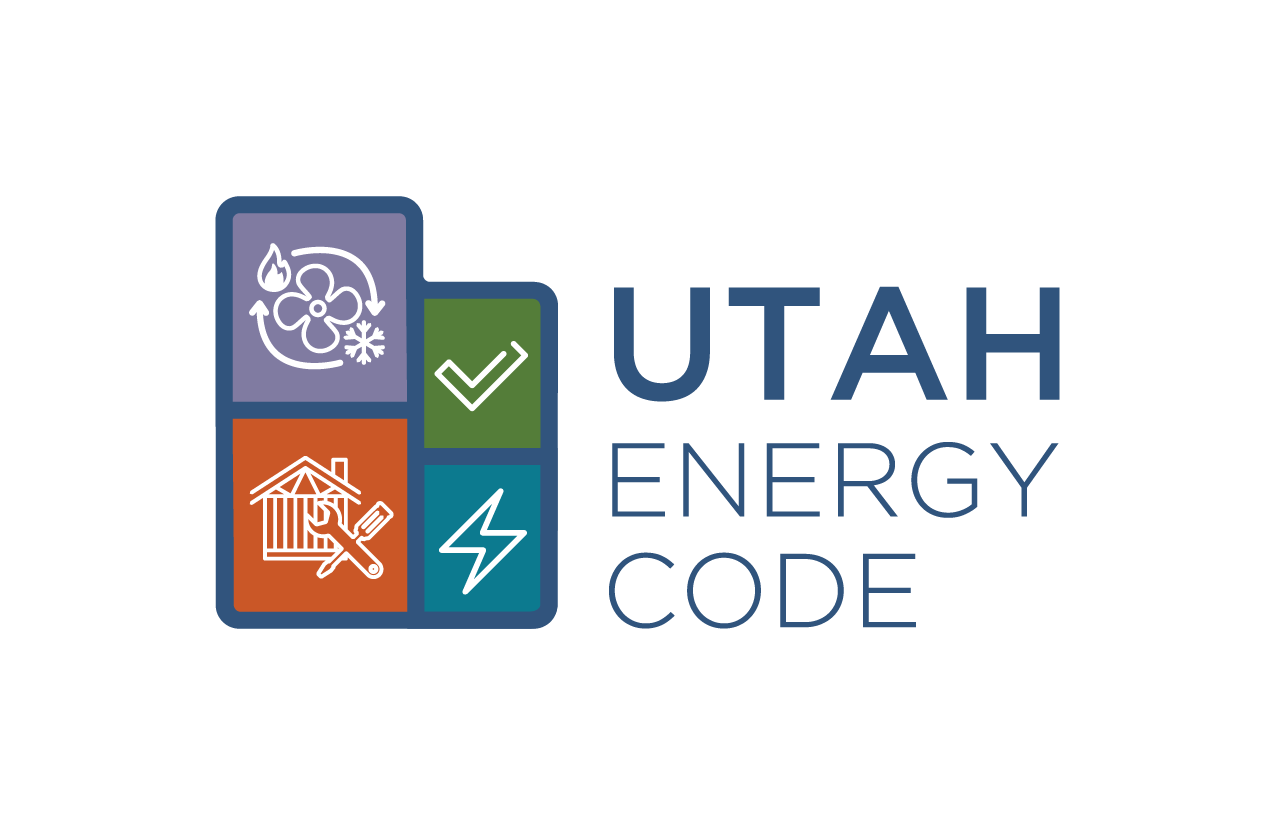
BUILDING AIR LEAKAGE, TESTING, AND MECHANICAL VENTILATION
An Energy Code Discussion with a Local Jurisdiction
Introduction:
A local jurisdiction requested assistance with their goals to increase energy code compliance within their building department and to improve the energy efficiency in buildings built in their city. The following includes their questions on various building codes, with an outline response to each question, shared prior to the successful staff training.
- International Building Code (IBC) 1202.1
1202.1 General. Buildings shall be provided with natural ventilation in accordance with Section 1202.5, or mechanical ventilation in accordance with the International Mechanical Code (IMC).- Does this section ever require an air leakage test if not otherwise required to meet IECC?
-
-
- No; however, 1202.5 details requirements that must be met to use natural ventilation. Building air leakage testing is often considered the only trigger for mechanical ventilation (MV), however, the IBC and IMC often require it. Many current apartment designs have difficulty meeting the natural ventilation 4% openable area requirements, as well as the 8% adjoining spaces requirements. Where MV is required by this section or the International Energy Conservation Code (IECC), see IMC 403.1 through 403.3.1.5 for all except for R-2, R-3, and R-4s, 3 stories or less. For those 3 stories or less, see IMC 403.3.2 (similar to International Residential Code (IRC) M1505).
-
-
- If an air leakage test results in an unexpectedly tight dwelling unit, what is the typical mechanical ventilation (MV) solution?
-
-
- The residential MV options in both the IRC and IMC 403.3.2 allow:
-
- Local exhaust
- Supply or
- A combination of the two – balanced ventilation, where the exhaust and supply are approximately equal.
-
- The first two bullet points above, local exhaust and supply, both assume sufficient infiltration leakage to replace or makeup exhausted air, or to leak out a volume equal to the fresh air supplied from outside.
-
- Notes:
- Commercial buildings generally require balanced ventilation.
- A recent DOE study (attached) shows new single-family dwellings in Utah are averaging approximately 3.1 ACH50, which is very close to the MV trigger.
- Without the Utah amendments, the trigger for MV is 5 ACH50. A home envelope tighter than 5 ACH50, without MV, can lead to air quality and moisture issues. Although MV may not be required in all dwellings, mechanical ventilation is strongly recommended.
- The 2021 code, as written, eliminates all MV triggers and simply requires MV in all circumstances.
-
- The residential MV options in both the IRC and IMC 403.3.2 allow:
-
-
-
- In general, when is makeup air required?
-
- The IMC definition is important. Makeup Air (MUA) – Any combination of outdoor and transfer air intended to replace air exhausted or exfiltration.
-
- In commercial buildings, ventilation air often meets the makeup air requirements. Smaller non-engineered commercial buildings often fail to comply with the ventilation tables in IMC Chapter 4.
- Generally, in residential dwellings, MUA is required anytime the exhaust is > 400CFM.
- Makeup air from inside is required for dryers in confined spaces.
- The IRC requires MUA with a range hood exhausting more than 400 CFM, however, there is an exception in the 2018 code for Direct Vent appliances.
- IRC G2407.4 (fuel gas) requires MUA where exhaust fans, dryers, and kitchen ventilation systems interfere with the operation of appliances (gas), further reference in G2407.9.1 where exhaust may impact combustion air.
- See IMC 501.4 pressure equalization. All air exhaust must be considered here. There must be adequate MUA to satisfy any deficiency. Ventilation air can provide some or all of the MUA.
- IECC C403.7.5 Kitchen Exhaust requires that:
-
- There is available transfer air from adjacent spaces.
- Greater than 5000CFM exhaust must be listed hood (as listed hoods require less exhaust), therefore less MUA per square foot of hood is required (more efficient design).
- 50% of MUA is transfer air OR Demand ventilation systems – modulating fans reducing airflow (both out and in) 50% reduction.
-
-
- The IMC definition is important. Makeup Air (MUA) – Any combination of outdoor and transfer air intended to replace air exhausted or exfiltration.
-
- Does this section ever require an air leakage test if not otherwise required to meet IECC?
- 2018 IECC C402.5 (Air Leakage)
- When is compliance with C402.5 required, starting with the compliance options of C401.2?
-
- Mandatory air leakage requirements apply to all IECC Options – prescriptive tables, prescriptive tradeoff- COMcheck, or performance.
-
- Is it correct to understand the thermal envelope COMcheck as an alternative method to show compliance with C402.1.5, and nothing else?
-
- No – COMcheck is an envelope insulation/fenestration compliance tool. COMcheck does not look at air leakage. C402.1.5 is COMcheck, a U-factor x Area (UA) Tradeoff, often referred to as a prescriptive trade-off.
Must still comply with all mandatory sections (air leakage). - Or are the COMcheck reports (thermal envelope, mechanical, lighting) a “standalone” alternative method of compliance with C401.2?
-
- All of the COMcheck reports are used to show compliance with the C401.2 (1) & (2) options. These COMcheck reports provide a relatively simple methodology to show compliance with most of the specified sections in each.
-
- No – COMcheck is an envelope insulation/fenestration compliance tool. COMcheck does not look at air leakage. C402.1.5 is COMcheck, a U-factor x Area (UA) Tradeoff, often referred to as a prescriptive trade-off.
-
- If ASHRAE 90.1 is chosen as the compliance method, does that include a provision similar to C402.5?
-
- Yes – 5.4.3 is the air leakage section.
- Yes – 5.4.3 is the air leakage section.
-
- If the designer chooses to comply with C402.5 by providing air leakage features per C402.5.1-8, what is your suggestion on how to ensure they call inspections at the right time?
-
- Always a difficult challenge. Inspectors should push for as much detail on the plans as possible, in order to best see what inspections will be required. For example, identifying on the plans the air barrier in sections/elevations with an identified dashed line. Also the plans should identify if the air barrier is provided with materials (C402.5.1.2.1) or assemblies (C402.5.1.2.2). Of course, if testing is the option, it must be identified on the plans. Generic guides of some kind would be helpful in this circumstance.
-
- Do you know of other jurisdictions that rely on approved third-party agencies to conduct inspections of air leakage features per C105.1?
-
- Of course, jurisdictions may hire third parties to perform plan reviews, inspections, etc., paid for by the jurisdiction.
-
- If the builder does not call inspections of the air leakage features before these are covered up, does that automatically change the compliance method to an air leakage test?
-
- This certainly may be an acceptable alternative to the removal and replacement of components necessary to perform the inspections.
-
- When is compliance with C402.5 required, starting with the compliance options of C401.2?
- 2015 IECC R402.4.1 as amended
- There are similar questions for projects complying with the residential provisions, however, note these Utah amendments:
- R402.4.1. Allows compliance with air barrier and insulation installation requirements OR air leakage testing.
-
- Correct – apparently there are jurisdictions that have created forms which must be signed at permitting, declaring the option selected and acknowledging the required inspections.
- This inspection is mandatory, required with any of the 5 compliance options.
-
- R401.2. A 4th compliance option is added: 2012 Utah REScheck (5% better). The REScheck software reflects the Utah amendment, requiring either air and thermal barrier installation per Table R402.4.1.1 or an air leakage test.
-
- The IECC includes 4 options and Utah has the 5th – the Utah 2012 REScheck.
- R401.2 (1) includes two options, The Prescriptive Tables and REScheck – R402.1.5, the UA Trade-off.
- The Utah REScheck is based on the 2012 IECC requirements so it is a weaker compliance option. This option does not allow the use of the 2012 Prescriptive tables. The big advantage to the builder is it allows an equipment tradeoff. High efficiency furnace or air conditioner, allowing a poorly
insulated wall.
-
- R402.4.1. Allows compliance with air barrier and insulation installation requirements OR air leakage testing.
- There are similar questions for projects complying with the residential provisions, however, note these Utah amendments:
- Builders don’t seem to be prepared for the consequences of an air leakage test. What are directions are codes related to air leakage going, both nationally and in Utah?
-
- Correct – if they use a blower door test, they would be wise to provide mechanical ventilation.
-
- Added item- Unvented attics or rafters – condensation issues in recently built Utah county apartments.
-
-
- Please see:
- IBC 1202.3 Unvented attic and unvented enclosed rafter assemblies
- IRC R806.5 Unvented attic and unvented enclosed rafter assemblies
-
-


Photo courtesy Brody Lambert
– Dr.Energy

0 Comments